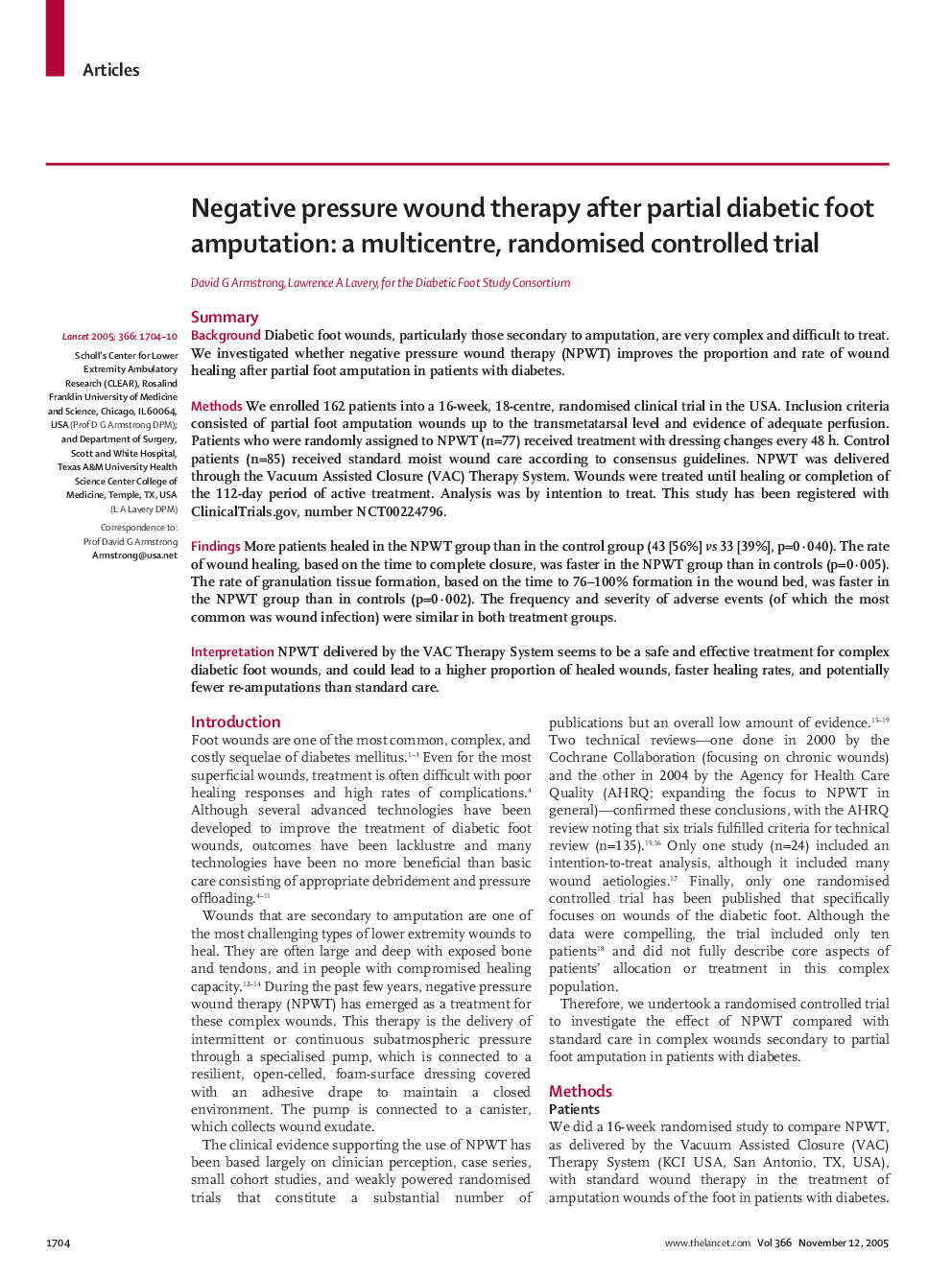| کد مقاله | کد نشریه | سال انتشار | مقاله انگلیسی | نسخه تمام متن |
|---|---|---|---|---|
| 3501601 | 1234533 | 2005 | 7 صفحه PDF | دانلود رایگان |

SummaryBackgroundDiabetic foot wounds, particularly those secondary to amputation, are very complex and difficult to treat. We investigated whether negative pressure wound therapy (NPWT) improves the proportion and rate of wound healing after partial foot amputation in patients with diabetes.MethodsWe enrolled 162 patients into a 16-week, 18-centre, randomised clinical trial in the USA. Inclusion criteria consisted of partial foot amputation wounds up to the transmetatarsal level and evidence of adequate perfusion. Patients who were randomly assigned to NPWT (n=77) received treatment with dressing changes every 48 h. Control patients (n=85) received standard moist wound care according to consensus guidelines. NPWT was delivered through the Vacuum Assisted Closure (VAC) Therapy System. Wounds were treated until healing or completion of the 112-day period of active treatment. Analysis was by intention to treat. This study has been registered with ClinicalTrials.gov, number NCT00224796.FindingsMore patients healed in the NPWT group than in the control group (43 [56%] vs 33 [39%], p=0·040). The rate of wound healing, based on the time to complete closure, was faster in the NPWT group than in controls (p=0·005). The rate of granulation tissue formation, based on the time to 76–100% formation in the wound bed, was faster in the NPWT group than in controls (p=0·002). The frequency and severity of adverse events (of which the most common was wound infection) were similar in both treatment groups.InterpretationNPWT delivered by the VAC Therapy System seems to be a safe and effective treatment for complex diabetic foot wounds, and could lead to a higher proportion of healed wounds, faster healing rates, and potentially fewer re-amputations than standard care.
Journal: - Volume 366, Issue 9498, 12–18 November 2005, Pages 1704–1710